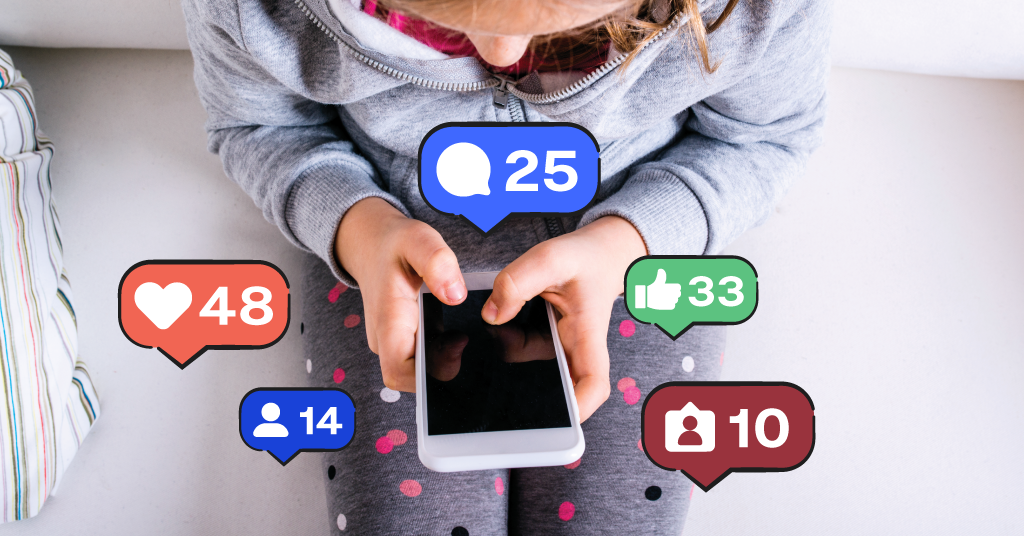
One of the most common questions we hear about from parents in our Facebook group is “How do I keep screen time in check for my kid?” Many families are concerned that their children may be developing unhealthy addictions to online gaming, social media, and even streaming sites like Netflix. What exactly is digital addiction, though? And how you can recognize the signs? In this blog post, we’ll take a deep dive into everything you as a parent need to know.
Is Addiction Even the Right Word?
When we hear "addiction," we usually think of substances like alcohol or dangerous behaviors like gambling. The issue with internet use is that it’s got so many positive parts, from keeping families in touch to learning remotely. And unlike substances like alcohol or tobacco, the internet doesn’t create a dangerous physical dependence (though psychological dependence can definitely be developed).
So, what’s a better term, then? When it comes to dealing with someone who’s on the internet more than is probably good, professionals often prefer the term “problematic internet media use.” It’s more encompassing of the different ways that people can get drawn into the digital world in potentially harmful ways.
Recognizing the Signs
As a parent, how do you recognize the signs of problematic internet media use? You know your child best, so pay attention to any serious changes in their day-to-day world. If they’re spending way more time creating Minecraft worlds than doing homework or hanging out with the family, that’s a sign that it may be time to reel in their screen time. Here are some other signs that may show a growing preoccupation with the digital world:
- Increased irritability or anxiety when unable to use devices
- Excessive time spent online, impacting schoolwork or sleep
- Withdrawal from other activities or hobbies
- Changes in mood or behavior, like becoming more secretive or defensive about device use
- Physical symptoms like headaches or eye strain from prolonged screen time
- Deceiving family members or others about the amount of time spent on gaming
- The use of screen time to relieve negative moods
An important thing to look out for is using digital tech as a coping mechanism. Like relying on food, substances, or other behaviors, using screen time consistently as an escape from emotional ups and downs can be a red flag.
Common Examples
Online gaming
This is probably the most recognizable form of problematic internet media use in kids, since video games are played by 90% of kids over the age of 2, and 75% of U.S. households own at least one gaming console. The average time spent playing per day? On average about 2 hours!
Video games are so consuming and addictive that there’s even an entry about it in the DSM-5 (the Diagnostic and Statistical Manual of Mental Disorders) — it’s called Internet Gaming Disorder. It can be hard to tell where the line is drawn between a gaming enthusiast and someone who’s prone to this disorder, but it usually comes down to how it impacts one’s real-life relationships and interactions.
Social media
Kids especially can get hooked to social media because it's like a never-ending game that's hard to put down. The social media companies purposely design their apps to be addictive and to keep users scrolling endlessly. This gamification of attention (like constantly getting notifications, likes, and followers) can lead to an unhealthy obsession with social media and difficulty focusing on other activities.
Streaming
Kids love YouTube. They love it so much that it’s the number one most-used streaming app among young people. From Shorts to live-streamers and videos of every length in between, YouTube’s algorithm purposefully keeps kids hooked into the next video, and the next. But it’s not just YouTube that sucks kids down video rabbit holes — it’s also Disney+, Netflix, Hulu, and countless other streaming platforms that are vying for attention. There’s even an option for watching video games when you’re not currently playing them — platforms like Twitch let kids view other people settling in for a session of Fortnite or Call of Duty. It’s like screen-time inception as kids layer screen upon screen for consumption. For little developing brains, the siren call of infinite content can be impossible to resist.
How Bark Can Help You Manage Screen Time
Managing your child’s screen time can feel like an uphill battle sometimes, but Bark is here to help! Many families use Apple Screen Time or Google Family Link, but these free options only go so far — and kids are great at figuring out workarounds to turn them off.
Bark is light years better than those options, and our screen time tool even allows you to get super granular. You can block content according to different times of the day. This may look like “no YouTube during the school day” or “only meditation apps after bedtime.” The possibilities are endless, and every family does it a little bit differently.
When your child is online, though, you can also count on Bark’s monitoring to scan for potential dangers in texts, apps, and social media. You’ll get alerted to issues like bullying, sexting, online predators, and more. Interested? Start your free, 7-day trial today!
Read more
Bark helps families manage and protect their children’s digital lives.





